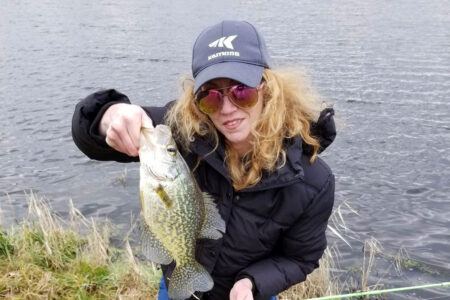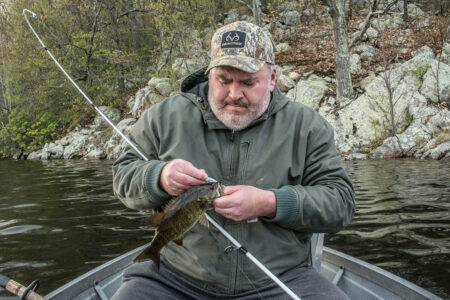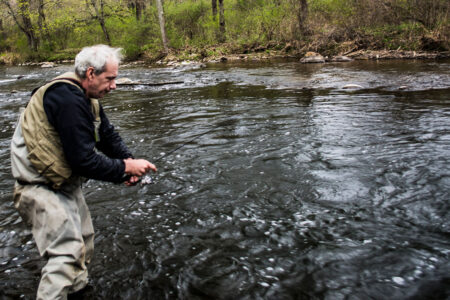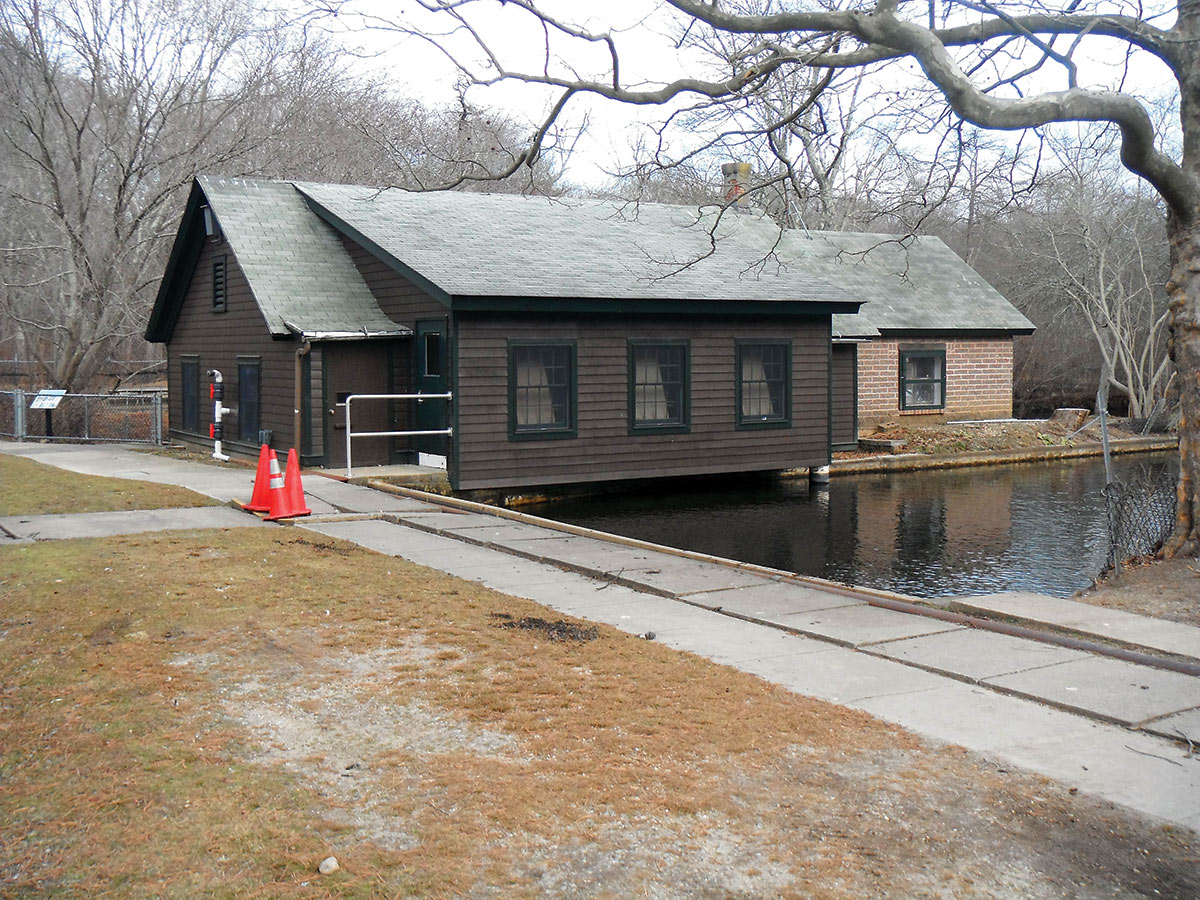
Once considered a world class trout fishery, the Connetquot River is back and providing good fishing throughout the year.
It was nearly 11a.m. as I drove up to the front gates of the Connetquot State Park in Oakdale. Years’ worth of memories began flooding my brain as I signed in at the booth, feeling nostalgic that it had taken me over eight years to return to this once world famous river. As I sat in the truck gathering my gear I wondered what the day would bring. Spending my weekends in Sayville as a kid I was never far from the river, and it was here that I hooked into my first trout and the many more that followed. It was also within these confines that my biggest trout from Long Island, an 8-pound rainbow was taken over 15 years ago. The Connetquot River system held a special place in my heart and following the state’s decision to close down the hatchery ended a chapter of my life I thought would be closed for good.
Fast forward to late 2017 and there I was for the first time in a very long while on my old stomping grounds. In a way it felt right. The hatchery had just recently begun to operate under a new system and fish production was underway. Having the day off with the weather looking kind of snotty, I figured I’d give it the benefit of the doubt and take a crack at fishing the river I once knew so well. I’d be lying if I said that my expectations were high at first, but after that initial trip and the many more that followed I was sold. Fast forward yet another year and I can happily say that the Connetquot is well on its way to being the park we all knew from the past. Maybe you’re like me and want to rekindle some of those great memories, or possibly you’re new to the fly fishing game and have wanted to give this a try. Regardless of what reason may bring you to the Conny, here’s a quick look into what the “new” Connetquot has in store for those who fish it today.
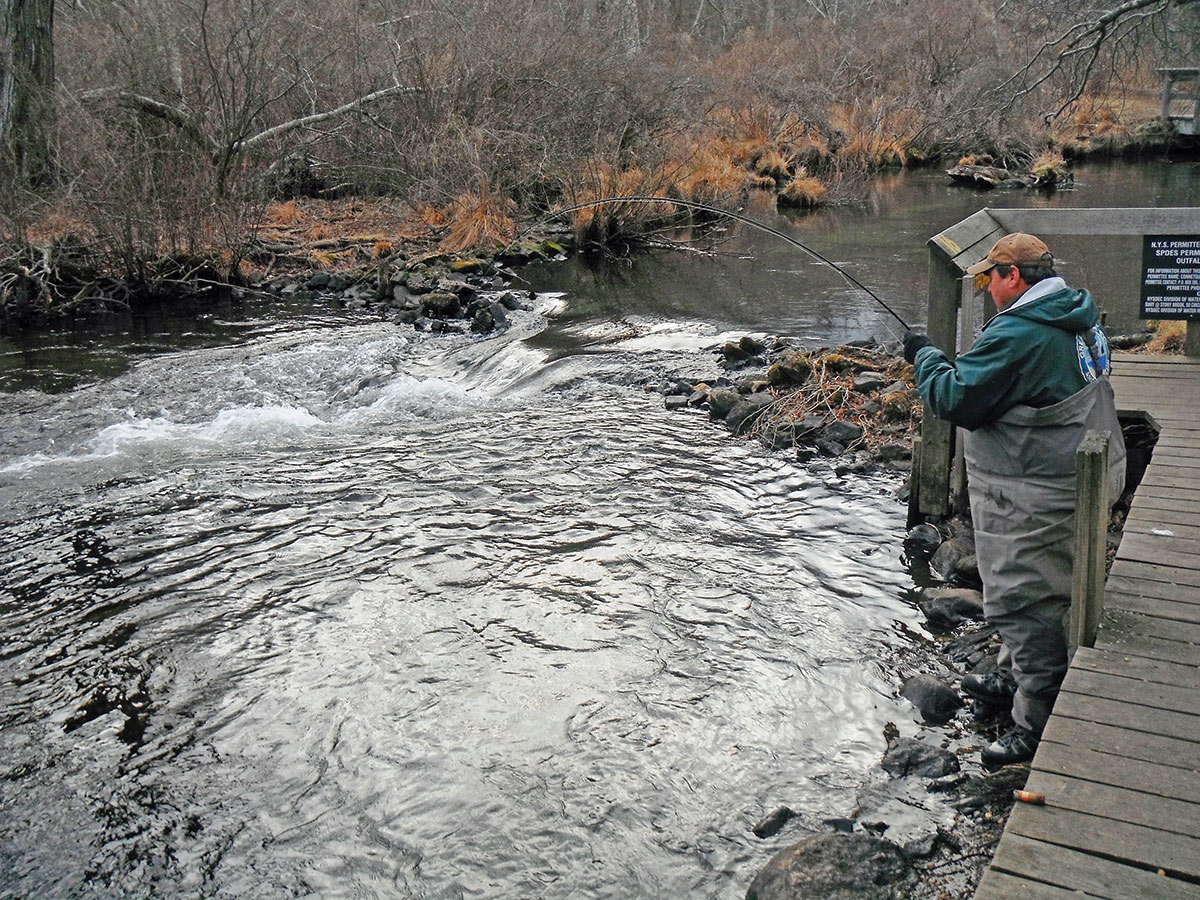
All About The Trout
Let’s not waste any time here and get down to the meat and potatoes of why the fishing at Connetquot State Park is well worth it. It’s all about the trout in this place and for very good reason. Some people (depending on who you talk to) might tell you that the fishing isn’t what it used to be but I don’t think that’s true. Walk the banks of this river when the water is clear and you’ll see more than enough big rainbows holding in the pools and runs to get your blood flowing. Not only are the rainbows big and plentiful, you’ll also notice some rather plump looking brook trout that inhabit this water as well.
Not convinced? In the past year I’ve hooked into a few rainbows that were border-line steelhead in the sense that these fish were big, silvery and very energetic, which hopefully bodes well for rebounding the once famous sea run fishery that took place here. Some of the rainbows I’ve caught on recent outings were pushing the 5-pound mark and most of what I’ve encountered on my frequent visits fall anywhere between 2 to 4 pounds. Mix in some monster brook trout that top out at over 16 inches at various times and you have fishing well worth the price of admission. What is missing are brown trout, some of which in years past ranged into the double digits.
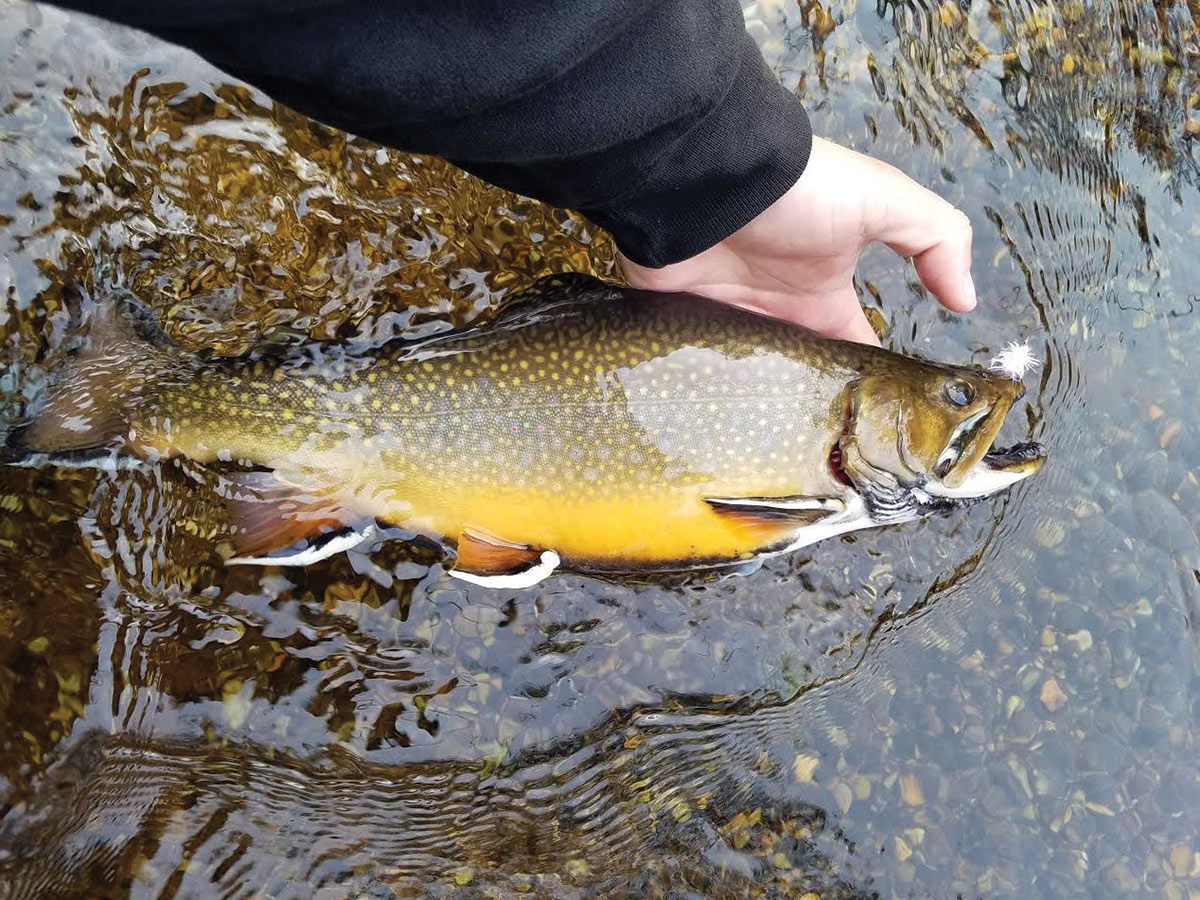
Gear Guide
For those of you who are new to the fly fishing game I’ll start by adding my two cents on why this is the river for you. For beginners, the Connetquot is a great place to learn how to fly fish for many reasons but the biggest one is that it’s a relatively easy river to learn on. What I mean by this is that the river itself is not very wide, therefore there’s no need for super long casts that you may see on those fly fishing shows that showcase big fast water in remote places. I also consider it great for beginners because a cast to a fish doesn’t need to be perfect. Add in a steady supply of trout coming from the hatchery, and you’ve got a recipe for learning how to fly fish in the most fun way possible. Don’t worry about your casts looking a bit sloppy, or if your drifts don’t line up at first. Don’t get discouraged, keep at it and remember, practice makes perfect.
As far as rods and reels go, there’s no need to spend a ton of money if you’re looking for a starter setup. For our purposes we’ll try to keep it on the cheaper side of things, but be aware that fly fishing gear can get pricey rather quickly. If I had to choose just one overall fly rod and reel for the park, I’d go with an 8- or 9-foot 5-weight rod with matching reel, spooled with a floating sink tip line. Take a look on the internet or stop by any tackle shop that carries fly gear, and in most instances the full setup will probably set you back somewhere around $150.
It’s also worth a mention to bring with you a good sturdy pair of waders as most, if not all of the “beats” or reserved sections (more detail on this later) require a bit of wading to search out the various packs of fish holding in each run or hole. While it’s true that every fishable section of the river has a casting platform on it, you’ll be very limited in the areas you can fish without waders. Also some of the lower beats require you to cross the river to get to them, therefore it’s a good idea to not forget your waders.
Other gear I like to have with me at all times is an extra jacket or sweatshirt in case it gets a little chilly (especially during the winter months) a rain jacket, and a pair of polarized sunglasses for spotting fish. Even when the water is crystal clear, trout tend to blend into the stream bottom very well. Pair that along with any glare created from the day’s sunlight, and spotting fish might be a bit difficult. Having polarized glasses helps tenfold in spotting fish before they spot you.
The last piece of information you’ll need to know in terms of gear consists of your leader material or tippet. Of course you can make up your own tippet, which should be roughly 8 to 9 feetin length, but most anglers simply buy ready-made tippets. All fly shops and tackle shops that carry fly gear sell pre made tippets. What tippet size to use isa personal choice, to keep things simple, stick with a 4x and if the fish get really picky, scale down to a size 6x or 7x.
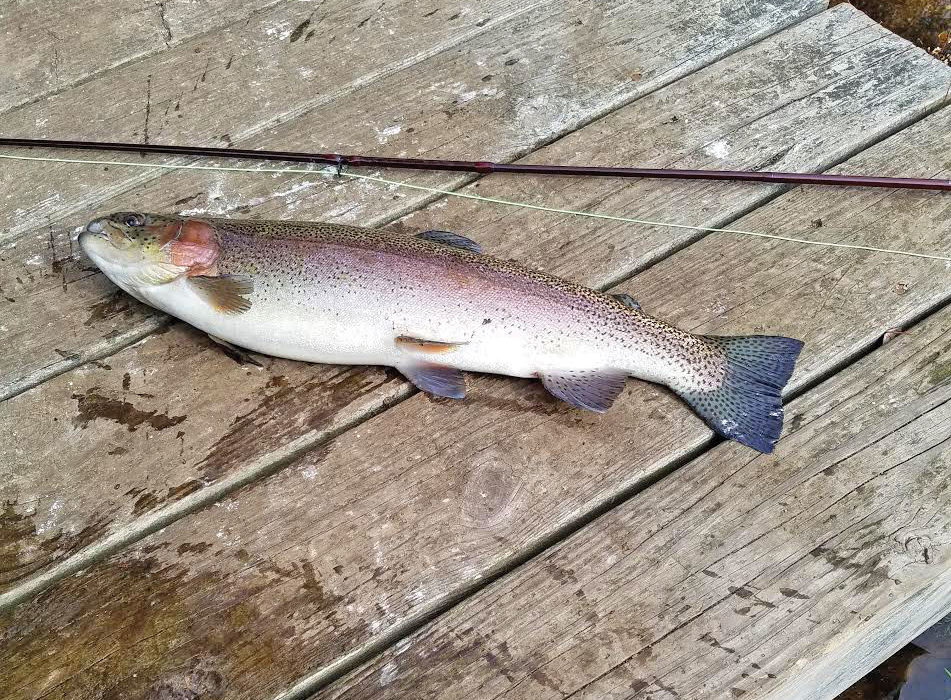
Flies For Thought
Now that we’ve gotten set up with some gear, we can focus on what I consider the most important aspect of fly fishing, the flies! Choosing a fly can vary from day to day, sometimes even hour to hour for many different reasons, but for our purposes I stick to what has given me the most success. Again this will vary depending on how you personally like to fish but I’ll do my best to showcase my favorite flies, and why I feel as though they work well for me.
Most, if not all, of my trout fishing is done subsurface. This includes various nymph patterns as well as streamers. The difference between fishing something like a nymph as opposed to a streamer is how I fish it. Nymphs, for example, I dead drift through a run under a strike indicator (a fancy word for bobber) with the length of leader adjusted accordingly. Keep your tippet length from fly to indicator anywhere between 2 to 3 feet and play around with the depth if the fish do not want to cooperate. Go to patterns consist of bead headed hare’s ears in colors ranging from tan, olive, to black, to pheasant tails, copper johns, and small egg patterns. I fish all of the above mentioned flies in sizes ranging from 12 all the way down to 22 in the dead of winter. The trick here is to keep changing size and color until the fish show you what they want.
My second choice is streamers. I love fishing streamers for the simple fact that unlike nymphs, I fish them actively. I consider streamers more closely in line with fishing lures on a spinning rod in that you are constantly moving the fly to grab a trout’s attention. Streamers seem to work well when fish are picky and refuse most nymph offerings. Fishing smaller flies isn’t always the answer and sometimes by throwing a big meaty streamer when the fish aren’t responding will be more than enough to elicit some reaction strikes. Streamer fishing is relatively simple in that I cast one out into a run or pool and slowly strip it back. My retrieve speed varies as sometimes the fish like it fast, while other times slow. Experiment a bit until you start getting strikes or hooking up.
Some of my favorite streamer patterns consist of mickey finns, wooly buggers, zonkers, and matukas in sizes ranging anywhere from 8 to 4. Obviously there are hundreds of color choices between these flies but I stick to either going very dark or very bright. Again you have to experiment with color choice a bit but in most instances the fish either want something more natural looking, or very vibrant and flashy. With that being said I carry streamers in colors such as olive and black all the way to bright pink, chartreuse and orange. Streamers are also one of my favorite style of flies to fish because the hits you will get on them are quick and hard, which always makes for a fun experience.
Park Info
The last thing we’ll take a quick look at is what to expect once you get to the park. Obviously fishing here is fly fishing only and spots are reserved on a first come first served basis. Each fishable spot on the river is called a beat, and one must check in at the booth in front of the parking lot to fish. Only one angler is allowed to fish the beat he or she reserves for that session, and that angler chooses their beat when they check in before the session begins. There are two sessions per day, one from 8 a.m. tonoon, and a second from noon to 4 p.m. A 4 p.m. to 8 p.m. session is added during July and August. In years past the park was closed from October to February, but it is now open year-round, providing good fishing opportunities through the winter months. The park is closed on Mondays, but it is open Tuesday through Sunday with the exception of some holidays. It’s also worth noting that while you may be able to fish by simply showing up, I’d strongly recommend calling (631-581-1005) a day or two ahead to make a reservation.
Fishing a single session here is a pay to play type of deal; the cost is $25, which must be paid in cash. You will also need a valid NYS freshwater fishing license in order to fish the park’s waters. I’ll also mention that beats are chosen on the day of fishing and cannot be chosen days before in advance if one were to make a reservation. Getting there early is highly recommended for choice beats, and it will also give you time to sign and gear up before your session starts. You should also be aware that beats above the hatchery are not stocked. Stocking is only done below the hatchery and on the Main Pond.
So there you have it, a quick look into Connetquot State Park Preserve’s rejuvenated trout fishery. Whether you’re looking to try fly fishing for the first time or possibly heading back to rekindle some old memories like I did, winter is the perfect time to give the “Conny” a shot on your next day off. You’ll have fun in doing so while possibly hooking into some of the beautiful trout that are once again swimming through these waters. It doesn’t matter if it’s your first time or your thousandth, the Connetquot always has something to offer for those who come to fish it. I think by now it’s safe to say that after a little time spent here, you too will understand why the rebirth of this river was well worth the effort in getting it back to what it once was.
